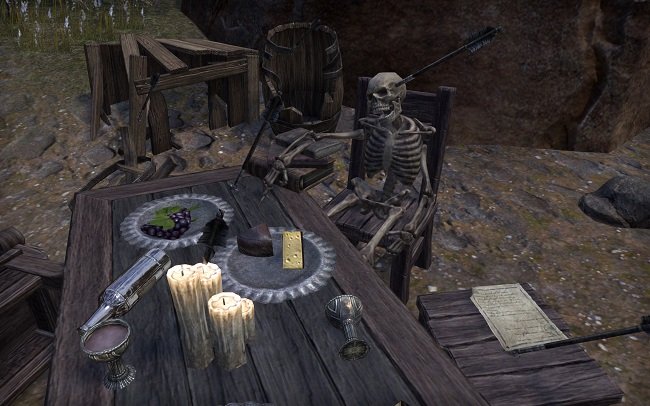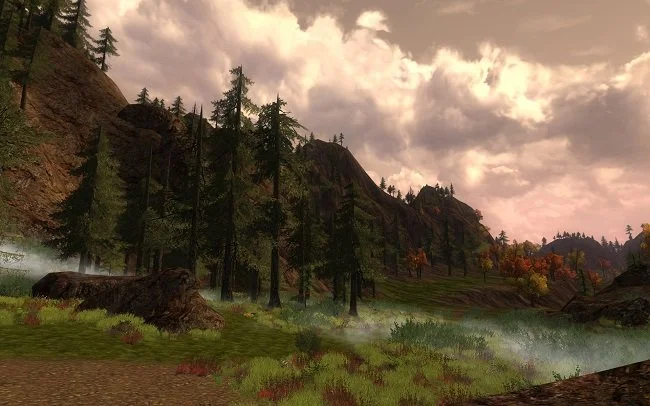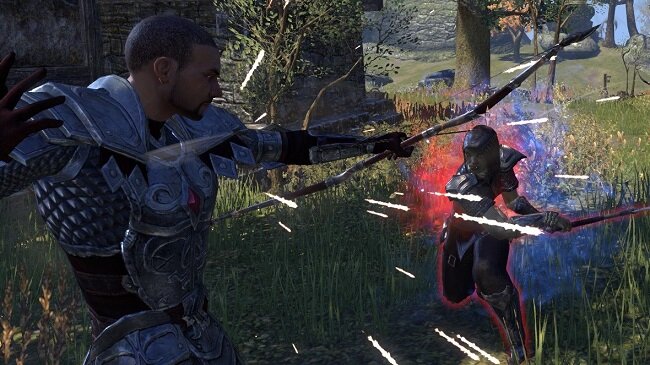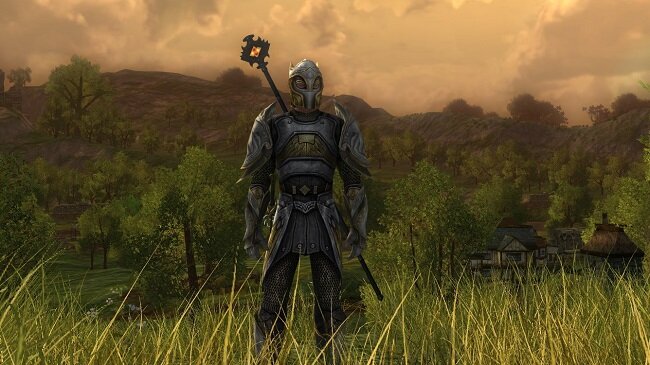MMO Tropes: Exploration
“The MMO genre is rife with its own set of tropes; recurring themes and motifs that have become established and ubiquitous. All of which are ideal material for a hastily produced, lazily conceived, recurring blog post”. Many MMORPGs are set in open worlds that are designed to mimic a real and living reality. Beautiful fantasy or science fiction themed environments, rich with diverse fauna and flora. Settlements are filled with people that go about their daily routine. There is often a day and night cycle and changing weather. All of which is intended to make the game world feel alive. Furthermore, these open worlds become a source of content of their own. Not only do they provide the environment for the various quests and missions that players undertake but a source of exploration and discovery. Something that many players value more than other types of game content.
Over the last 20 plus years, the MMO genre has refined this notion of exploration, capitalising upon the fact that humans are curious animals and that they’ll happily set aside a story to simply go and see what is out there in a virtual world. Hence many games of this kind now make exploration a source of rewards. Achievements and accolades encourage players to look in every nook and cranny and leave no stone unturned in the hope of finding everything there is to discover in the game. The Lord of the Rings Online does this very well, drawing heavily upon established lore from the Tolkien Legendarium. Hence a player travelling through a canonical region such as the Trollshaws, will seek to find the Three Stone Trolls that captured Bilbo and the Dwarves. Similarly, an enthusiastic fan can marvel at the way Deep Space Nine has been faithfully recreated in Star Trek Online.
Guild Wars 2 takes an interesting approach to the way in which it presents its zone maps to the player. By default they’re vague and indistinct, giving the player a notion of the type of environment present, but nothing more. They are devoid of specific detail until you start travelling through the region and speaking to NPCs. Then the details appear. LOTRO used to do this upon release, calling the intentional obscuring “the fog of war” but it was later removed as a feature. Now the maps show the terrain clearly. Star Wars: The Old Republic similarly withholds map data but I find that this particular MMO’s environments are not as uniformly engaging as other MMOs. Some are certainly better than others. But for every character rich environment such as Alderaan, there are generic featureless wastes such as Tatooine and Hoth. Guild Wars 2 excels at making verticality interesting, especially now that they’ve introduced specialist mounts allowing players to reach obscure topographical features.
Curiously Star Trek Online, a game based upon a franchise predicated upon space exploration, doesn’t offer players a great deal of planetary content to discover. Only a small percentage of planets can be visited and these are usually small and self contained instances. However, space travel is substantive with the galaxy being divided into four quadrants, as referenced in the various TV shows. Another game that has interesting regional zones but which are heavily compartmentalised is The Elder Scrolls Online. Although they are visually diverse, I’ve never felt that Tamriel comes across as a coherent wider world, in the same way as Middle-earth does in LOTRO. Instancing, invisible walls and carefully constructed mountain ranges that funnel players in specific directions are a necessary evil in the MMO genre. However, some games just do it better than others maintaining the illusion of an open world.
My recent return to Guild Wars 2 has been greatly aided by the games focus on exploration. Perhaps lessons were learned from the Heart of Thorns expansion which introduced verticality into the game but relied on jumping and gliding skills to explore. Mounts address this mechanic in a far more practical and entertaining way. Exploration also compensates those not especially engaged by the lore of the game. The ability to reach obscure parts of the world map is very addictive and challenging. I begin to see the appeal of going “off map” which some players delight in doing. Exploration is now an integral aspect of the MMO genre and as such, players expect their searching to be rewarded by Easter Eggs and pop culture homages. Like the “killer rabbit” in a cave reference in LOTRO which is a nod to Monty Python and the Holy Grail. It raises the question as to whether this aspect of gameplay could become the foundation of an entire MMO. Something that No Man’s Sky has come close to over time.









